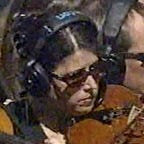Eastern Orthodox
written by Kathy McClay
The Eastern Orthodox readings this week were perplexing and required a bit more reflection than we had anticipated. A chapter from Metropolitan John Zizioulas book, Communion and Otherness (2006) was the first reading discussed. Most of us were puzzled because the chapter was filled with Greek and Hebrew words that were not defined. We believe the reading attempted to say that the church is the mystical body of Christ. We will invite you to consider a couple of quotations taken from this chapter:
“ . . . does mystical only have to refer to the extraordinary and the subjective?” (p. 287).
“All forms of mysticism seem to have to do with man’s desire, indeed deep existential need, to bridge the gap between what he in fact is or experiences and what transcends him. In religion this means bringing the gap between being human and the divine!” (p. 291).
I believe what was being expressed here is very similar to what Paul says in I Corinthians 12, when he explains that we (the church) are the hands and feet of Christ. Our existence as the bride of Christ, the Church, is beyond what we can see, hear, touch, or feel, there is something mystical about our experience here on earth that transcends our earthly experience and enters into the realm of the unseen.
The second reading was easier to understand and Alexander Schmemann’s passion was catching. This chapter entitled, The Eucharist was taken from his book, For the Life of the World, Sacraments and Orthodoxy (1973). As Dr. Schmemann asserts, joy cannot be defined or analyzed, according to the scriptures we have to enter into joy. “Enter thou into the joy of thy Lord” (Matthew 25:21). “And we have no other means of entering it, except through the one action which from the beginning has been for the Church both the source and the fulfillment of joy, the very sacrament of joy, the Eucharist” (p. 25).
Partaking of the wine and bread leads the believer into the very presence of God. It is our “mountain top experience”. The liturgy used for hundreds of years in the Eastern Orthodox Churches was to explain the aforementioned truths.
Some in our group found the liturgy boring, but I found it soothing and comforting to rest in such history.
